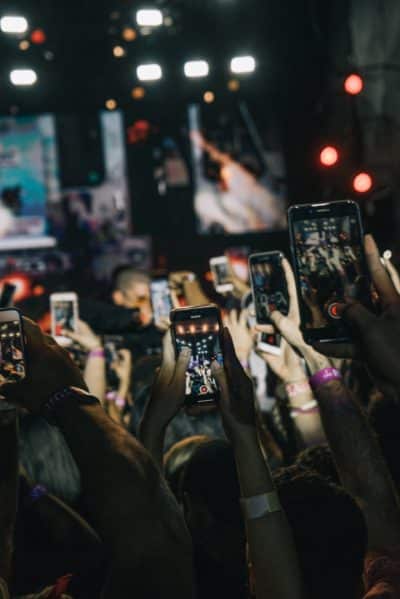Do you have a knack for photography but can’t afford a professional camera just yet? Well, there’s nothing to be upset about as you can take equally stunning photos with a mobile phone. All you’ll need is to keep your camera lens clean and learn a few tricks of mobile photography, which we have listed below.
IMAGE: UNSPLASH
1. Adjust Camera Settings Manually
The default camera in your phone has a multitude of settings apart from the default-setting mode. The camera modes/settings should be adjusted manually as per your preference to get that perfect shot.
First, familiarize yourself with all the camera modes, settings, and their actions from HDR to exposure to ISO and more. You can also capture excellent photos straight from the auto-camera, but sometimes you need to make manual changes manually to improve that superb shot.
2. Set The Focus On Your Subject
This is the most common mistake committed when capturing photos. Don’t forget to tap on the photo’s subject to keep it in focus. Sometimes, even if the camera lens is clean, your photo’s subject isn’t captured sharply, because the camera’s auto-focus function didn’t acknowledge your subject. Thus, ensure the subject is apparent in focus before clicking the photo.
3. Click By The Rule Of Thirds
The fundamental rule of composition is the rule of thirds that require you to mentally break down an image into thirds with two vertical and horizontal lines, leaving you nine equal sections. You can turn on the grid option from your camera settings to capture photos symmetrically.
Photographing your subject along these lines creates different perceptions of the same picture. For instance, focusing your subject off-center creates a balanced image, whereas placing your subject in the center creates a sharp and striking image.
4. Give Attention To The Lighting
Lighting is the most significant aspect of photography. The direction, glow, harshness, and color of the light are the biggest factors in determining the end result of a photo. Before capturing a shot, find the light source and examine its quality in your camera from all angles. This ensures you capture your best shot while taking advantage of the light source to its fullest.
5. Experiment With Editing Apps
There is a multitude of editing apps for mobile phones to convert good photos into better photos. The majority of photographers prefer keeping their photos raw; however, editing has become a prominent skill among millennial photographers.
So, experiment with different apps and manually manipulate your pictures for total control over how your photo appears in the end. Or, simply use the in-built filters from these apps. Many professionals recommend editing with Lightroom mobile presets to make your photos look anything but extraordinary.
6. Avoid Using A Flash
Some images call for a flash, but only a few actually benefit from the digital flash of your phone. Flash is excellent for enhancing images set in low-light environments, but typically it makes the subject appear extra bright, unnatural, or worse, could create the embarrassing red-eye.
Try to use natural lighting as often as possible. If necessary, use external lighting sources such as a lamp, torch, or other LED accessories. Thus, keep your flash off always by default to avoid clicking bad photos and turn on when needed.
7. Never Use The Zoom Function
Zooming in to capture a shot could be the biggest photography sin one can commit. Thus, steer clear from the zoom function of your smartphone as it doesn’t work the way a professional camera’s zooming function does. Zoomed pictures take away the clarity and structure of the image.
Even if you have the latest smartphone with an improved digital zoom, avoid zooming in at all costs if you don’t want to lose your image resolution. Instead, go near the subject to capture, if you cannot take the picture from where you’re standing and crop the unwanted subjects from the image.
8. Keep Your Camera Steady
Nothing is worse than blurry photos. This applies to all lenses, including professional and especially smartphone cameras. Shaky photos result from unsteady hands and shaky cameras. In a brightly lit environment, changes in the camera movement won’t result in significant problems. However, in low-light, even the slightest movement results in a blurry image.
To avoid this, take multiple photos of the same shot or invest in a tripod or a Bluetooth shutter. There you have it, the eight best tips to improve your photography and don’t forget to experiment with different tricks.
If you are interested in even more technology-related articles and information from us here at Bit Rebels, then we have a lot to choose from.


COMMENTS